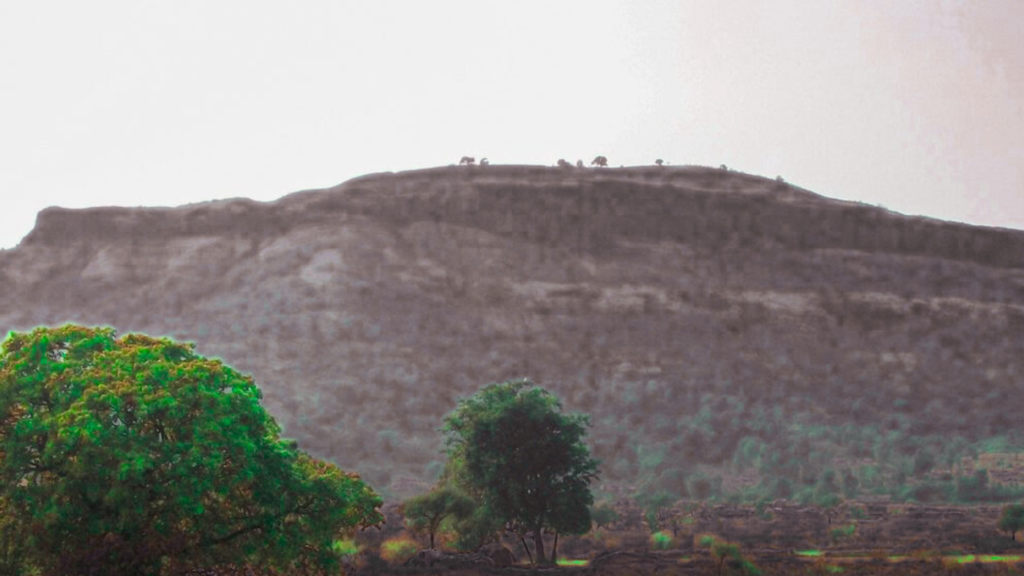Nestled in the heart of the Sahyadri mountains, Tringalwadi Fort stands as a testament to Maharashtra’s rich history and natural splendor. This hidden gem, perched at 3,000 feet above sea level, beckons adventure seekers, history buffs, and nature lovers alike. Whether you’re planning a thrilling monsoon trek or seeking to unravel the mysteries of a 10th-century fortress, this comprehensive guide to Tringalwadi Fort will equip you with everything you need to know. From its historical significance to practical trekking tips, we’ve crafted a journey that’s well-researched, educational, and sensational. Let’s embark on an unforgettable exploration of Tringalwadi Fort!
What Is Tringalwadi Fort? An Introduction to a Sahyadri Marvel
Tringalwadi Fort, located in the Igatpuri taluka of Nashik district, Maharashtra, is a historic hill fort that has captivated visitors for centuries. Positioned along the ancient Thal Ghat trade route connecting the Konkan coast to Nashik, the fort served as a strategic outpost, offering panoramic views of the surrounding Sahyadri ranges. Its mesa rock formation, coupled with ancient caves and architectural remnants, makes it a unique destination for trekkers and historians. Unlike more famous forts like Sinhagad or Raigad, Tringalwadi remains relatively offbeat, offering a serene escape from crowded tourist spots. Its proximity to Igatpuri, a popular hill station, adds to its allure, making it an ideal weekend getaway from Mumbai or Pune.
The fort’s name, derived from the nearby Tringalwadi village, evokes a sense of rustic charm. At its foothills lies the Pandav Leni cave, a Jain temple with intricate carvings, while the fort itself houses remnants of temples, cisterns, and bastions. Whether you’re drawn by the promise of adventure, the call of history, or the beauty of monsoon-drenched landscapes, Tringalwadi Fort promises an experience that lingers long after you’ve descended its trails.
The Historical Significance of Tringalwadi Fort
To understand Tringalwadi Fort’s allure, we must delve into its historical roots. Believed to have been constructed around the 10th century, the fort’s origins are shrouded in mystery, with no definitive records pinpointing its builders. Some historians suggest it was a strategic outpost during the Yadava dynasty, while others link it to the Jain community due to the presence of the Pandav Leni cave at its base. The fort’s location along the Thal Ghat trade route made it a vital checkpoint for monitoring commerce between the Konkan and Deccan regions.
By the 16th century, Tringalwadi Fort came under the control of the Nizam Shahi dynasty of Ahmednagar, as noted in historical accounts from 1594 CE. Its formidable walls and elevated position made it a prized possession. In 1688, the Mughals seized control, only for the Marathas to reclaim it later. By 1818, the fort was among the 17 surrendered to the British during the Third Anglo-Maratha War. Today, its ruins—semi-circular bastions, water cisterns, and temple remnants—offer a glimpse into its storied past, inviting visitors to imagine the lives of sentries and rulers who once walked its ramparts.
Why Visit Tringalwadi Fort in 2025?
In an age where travel is about authentic experiences, Tringalwadi Fort stands out as a destination that blends adventure, history, and nature. Its moderate trek difficulty makes it accessible to beginners, while its secluded location ensures tranquility. The fort’s monsoon charm, with cascading waterfalls and lush greenery, has made it a favorite among trekkers. Moreover, its proximity to other attractions like Kalsubai Peak and Trimbakeshwar Temple makes it a versatile addition to any Maharashtra itinerary. For those seeking Instagram-worthy vistas or a chance to connect with history, Tringalwadi Fort delivers in spades.
How to Reach Tringalwadi Fort: A Step-by-Step Guide
Getting to Tringalwadi Fort is an adventure in itself, with scenic routes that set the stage for the trek ahead. Here’s how to reach the fort from major cities:
By Train
Igatpuri railway station, just 10 km from Tringalwadi village, is well-connected to Mumbai, Pune, and Nashik. From Mumbai, take a train like the Mumbai-Nashik Express, which takes about 2.5 hours. Upon arriving at Igatpuri, hire a local cab or auto-rickshaw to reach Tringalwadi village, the base for the trek. The fare typically ranges from INR 200-300.
By Road
Tringalwadi Fort is approximately 120 km from Mumbai and 240 km from Pune, making it a comfortable road trip. From Mumbai, take NH160 via Thane and Kasara Ghat, enjoying scenic views of the Western Ghats. The journey takes about 3 hours. From Pune, follow NH60 to Nashik, then NH160 to Igatpuri, a 4.5-hour drive. Alternatively, take a state transport bus to Igatpuri and a local taxi to Tringalwadi village. Google Maps can guide you to the base village via Igatpuri or Ghoti village.
By Air
The nearest airport is Nashik’s Ozar Airport, 70 km away, though Mumbai’s Chhatrapati Shivaji Maharaj International Airport (140 km) is more accessible for international travelers. From either airport, rent a cab or take a bus to Igatpuri, then proceed to Tringalwadi village.
Once at Tringalwadi village, the fort is a 3 km trek, starting from a small temple at the base. The trail is well-marked and navigable, even for first-time trekkers.
The Tringalwadi Fort Trek: What to Expect
The trek to Tringalwadi Fort is a highlight for adventure enthusiasts, offering a mix of easy trails, moderate climbs, and breathtaking views. Rated as medium difficulty with normal endurance requirements, it’s ideal for beginners and families. Here’s a detailed breakdown of the trekking experience:
Trek Overview
Distance: 3 km from Tringalwadi village to the fort’s summit
Duration: 1-1.5 hours to ascend, 1 hour to descend
Difficulty: Easy to medium
Best Time: Post-monsoon (October to February) for pleasant weather and vibrant landscapes
Starting Point: A petite temple in Tringalwadi village
The Trail
The trek begins with a gentle walk through flat fields and small streams, perfect for warming up. After about 1 km, you’ll reach the Pandav Leni caves, a Jain temple with a carved entrance and a statue of Rishabhanatha. The trail then winds through dense forests, rich with flora and fauna, before transitioning to rugged terrain with rock-cut steps. The final ascent involves a short climb to the fort’s entrance, marked by a Shiva temple. The path is straightforward, but trekking shoes with good grip are recommended, especially during the monsoon when trails can be slippery.
Highlights of the Trek
Pandav Leni Caves: Explore the 10th-century Jain cave with intricate carvings and a serene sabha mandapa.
Scenic Views: From the fort’s summit, enjoy panoramic vistas of Kalsubai, Kulang, and Harihar peaks, as well as the Tringalwadi Dam.
Monsoon Magic: During July to September, the trail is dotted with waterfalls and mist-covered valleys, creating a surreal experience.
Historical Ruins: Discover semi-circular bastions, water cisterns with carved pillars, and remnants of a Bhavanimata temple.
Trekking Tips
Start early (6-7 AM) to avoid the afternoon sun and enjoy cooler temperatures.
Carry at least 2 liters of water, as the fort has no potable water sources except underground cisterns (use with caution).
Pack dry snacks like energy bars or nuts, and avoid heavy meals during the trek.
Wear comfortable trekking shoes and carry a raincoat or poncho during the monsoon.
Use a 20-30 liter backpack to keep your hands free for climbing.
Hire a local guide (INR 500-800) for a richer historical context, especially if exploring caves or tunnels.
Exploring Tringalwadi Fort: Key Attractions
Once atop the fort, a treasure trove of historical and natural wonders awaits. Here’s what to see and do:
Architectural Marvels
The fort’s quadrangular layout, with massive semi-circular bastions, is a highlight. These bastions, dating back to the 16th century, offer sweeping views of the Western Ghats. Intricate stone carvings and Marathi inscriptions adorn the walls, hinting at its Nizam Shahi origins. The Shiva temple at the entrance and the Hanuman temple near Tringalwadi Lake are spiritual stops, while the Bhavanimata temple’s ruins add to the fort’s mystique.
Ancient Caves and Cisterns
The Pandav Leni cave at the foothills is a must-visit, with its carved pillars and serene ambiance. On the fort, explore dry cisterns and underground water tanks, some with drinkable water and ornate designs. For the adventurous, mystical tunnels and passages run along the fort’s circumference, though they require torches and caution.
Panoramic Views
The fort’s turban-like summit overlooks the Kalsubai Harishchandragad Wildlife Sanctuary, Talgad, and Igatpuri. On clear days, the distant peaks of Alang and Madan are visible, making it a photographer’s paradise. Sunrise and sunset views are particularly spectacular, casting golden hues over the Sahyadri ranges.
Adventure Activities
Beyond trekking, Tringalwadi offers opportunities for camping, rappelling, and rock climbing, especially during winter. The Tringalwadi Dam, 7 km from the fort, is a popular camping spot, while the nearby waterfall is perfect for a refreshing dip. Always check local permissions for camping within the fort’s premises.
The Best Time to Visit Tringalwadi Fort
Timing your visit to Tringalwadi Fort can enhance your experience. The post-monsoon and winter months (October to February) are ideal, offering pleasant weather (15-25°C), lush greenery, and clear skies for unobstructed views. The monsoon season (July to September) transforms the region into a misty wonderland, with waterfalls and vibrant flora, but slippery trails require extra caution. Summer (March to June) is less recommended due to high temperatures (30-35°C) and dry landscapes, though early morning treks can still be enjoyable.
Nearby Attractions to Explore
Tringalwadi Fort’s location makes it a gateway to other Sahyadri wonders. Here are some nearby attractions to include in your itinerary:
Kalsubai Peak: Maharashtra’s highest peak, 30 km away, offers a challenging trek with stunning views.
Trimbakeshwar Shiva Temple: A Jyotirlinga temple, 54 km from the fort, is a major pilgrimage site.
Tringalwadi Dam and Waterfall: Perfect for camping and picnics, just 7 km from the fort.
Malshej Ghat: A scenic hill station, 60 km away, known for its waterfalls and birdwatching.
Vihigaon Waterfalls: Ideal for adventure activities like rappelling, located 40 km from Igatpuri.
Practical Tips for a Safe and Enjoyable Visit
To make your Tringalwadi Fort adventure seamless, follow these practical tips:
Pack Smart: Carry a torch with extra batteries, a first-aid kit, and insect repellent. A lightweight raincoat is essential during the monsoon.
Respect Nature: Avoid littering and stick to marked trails to preserve the ecosystem.
Check Weather: Monsoon treks require weather updates to avoid heavy rain or landslides.
Local Cuisine: Try misal pav or vada pav at Igatpuri’s roadside stalls for a taste of Maharashtra.
Photography: Bring a camera or smartphone with ample storage for capturing the fort’s vistas.
FAQs About Tringalwadi Fort
What is Tringalwadi Fort known for?
Tringalwadi Fort is renowned for its 10th-century history, scenic trek, and panoramic Sahyadri views. It’s a popular monsoon destination near Igatpuri.
How long is the Tringalwadi Fort trek?
The trek is 3 km from Tringalwadi village, taking 1-1.5 hours to ascend and 1 hour to descend.
Is Tringalwadi Fort suitable for beginners?
Yes, its easy-to-medium difficulty makes it ideal for novice trekkers and families.
What’s the best time to visit Tringalwadi Fort?
October to February offers pleasant weather, while July to September is ideal for monsoon beauty.
Are there guides available for the Tringalwadi Fort trek?
Local guides are available in Tringalwadi village for INR 500-800, providing historical and navigational insights.
Conclusion: Embark on Your Tringalwadi Fort Adventure
Tringalwadi Fort is more than a destination—it’s a journey through time, nature, and adventure. From its ancient caves to its mist-covered trails, this Sahyadri gem offers an experience that’s both thrilling and humbling. Whether you’re a trekker chasing monsoon magic, a historian unraveling the past, or a traveler seeking serenity, Tringalwadi Fort delivers. Plan your visit today, pack your sense of wonder, and let this majestic fortress weave its spell. Share this guide with fellow adventurers, and join the growing community of Tringalwadi enthusiasts in 2025!



